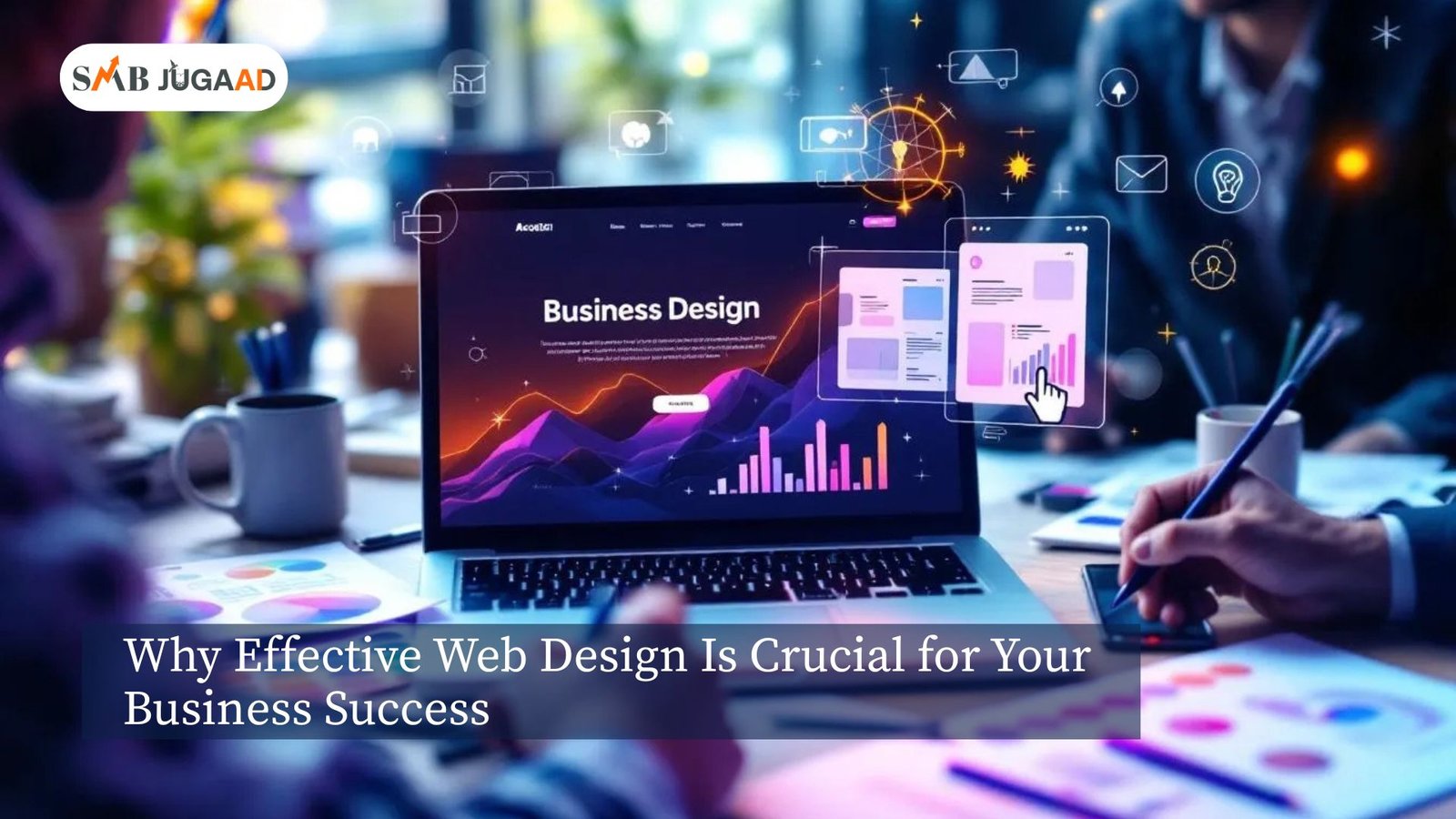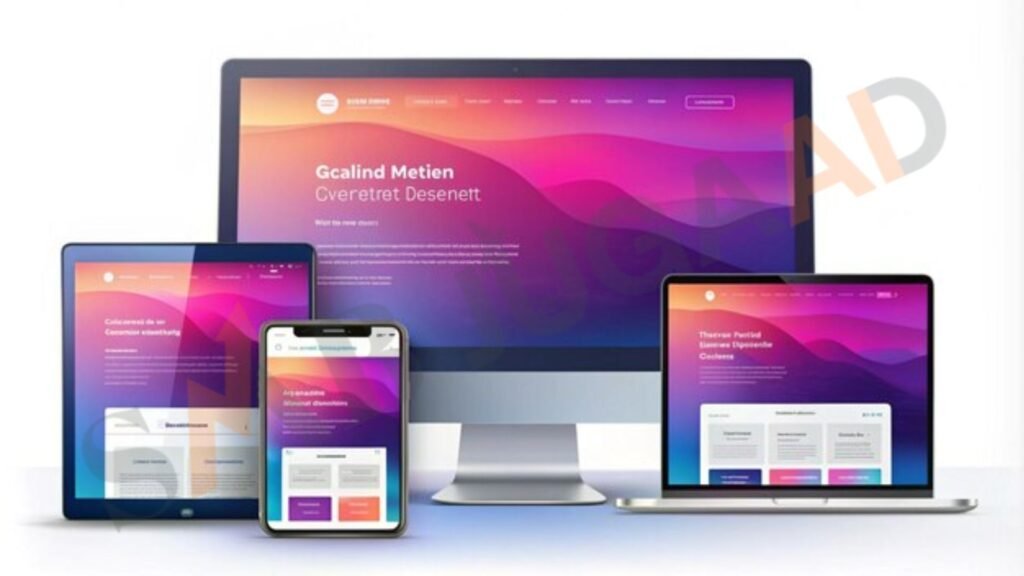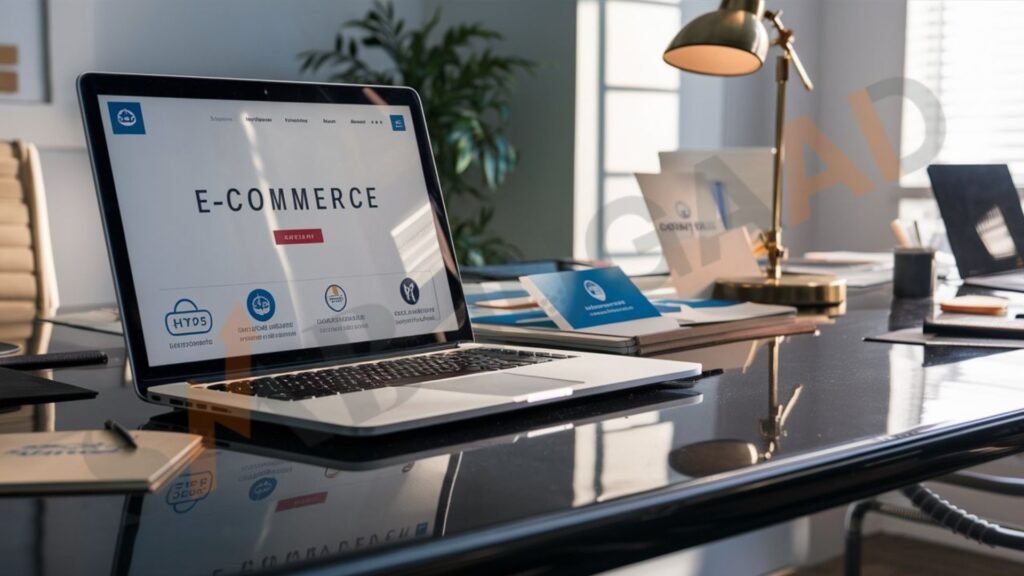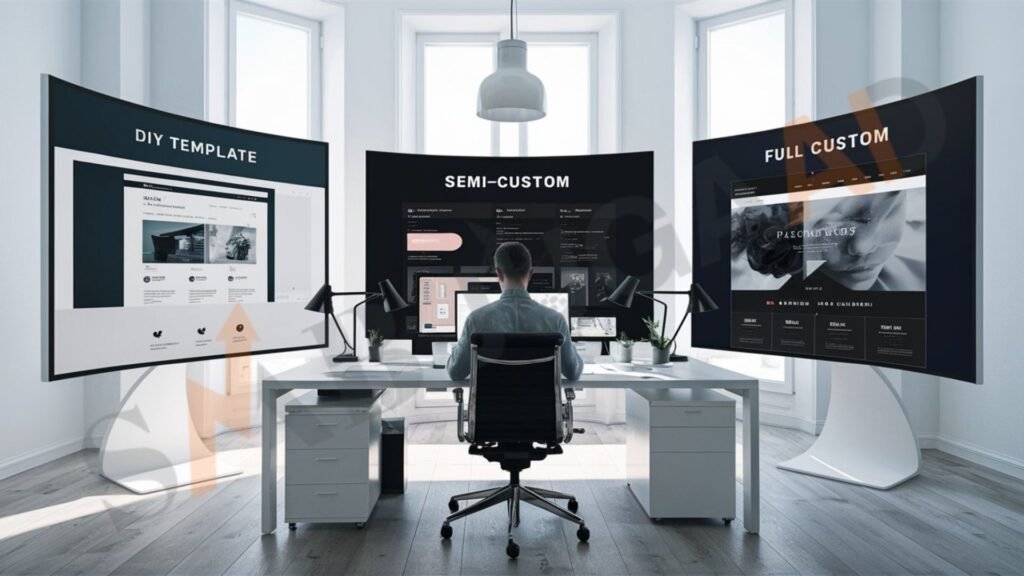
Table of Contents
Web Design for Business Success latest: In today’s digital-first world, your website is the face of your business — your storefront, salesperson, and brand ambassador all rolled into one. It’s often the very first point of contact potential customers have with you. That first impression happens in seconds and can determine whether a visitor becomes a lead or leaves forever.
That’s where Web Design for Business Success latest principles come into play. Great design isn’t just about aesthetics — it’s about usability, credibility, and conversion. When done right, it helps you build trust, engage users, and drive measurable business results.
Let’s explore how thoughtful design choices influence trust, SEO, conversions, and long-term growth — and how Web Design for Business Success latest strategies can give your business a real competitive edge.
Your Website: The Digital Handshake That Defines Trust
Imagine walking into a beautifully designed store — clean, well-lit, and easy to navigate. You immediately feel confident about the brand. Online, the same principle applies.
When someone lands on your homepage, they don’t start by reading your copy. They first feel the design. Does it look modern, professional, and organized? Or cluttered and outdated?
That visual handshake forms their subconscious judgment about your entire business. According to research, 94% of users make trust decisions based on design alone.
If your site follows Web Design for Business Success latest practices — clean layout, consistent visuals, fast load times — you instantly communicate professionalism and reliability.
Your website is not just a digital brochure. It’s your credibility statement.

The Psychology Behind First Impressions in Web Design
Our brains are wired to make snap decisions. Within 50 milliseconds, a visitor decides whether to stay or leave. The Web Design for Business Success latest approach leverages psychological cues that influence emotion and trust:
- Cognitive Fluency: People prefer things that are easy to understand and navigate. Simplicity feels safe.
- Gestalt Principles: The mind groups similar shapes and colors — balanced design feels “right.”
- Emotional Cues: Colors, spacing, and typography trigger subtle feelings (e.g., blue evokes trust, white space creates calm).
- Halo Effect: When your website looks good, users assume your products or services are high quality too.
This is why web design isn’t superficial — it’s psychological storytelling in visual form.

Core Elements of a Strong First Impression
To create a professional, trustworthy first impression, the Web Design for Business Success latest framework focuses on aligning several visual and structural elements:
| Element | What It Communicates | Best Practice |
|---|---|---|
| Layout | Order, clarity, structure | Use grid-based design; keep spacing balanced. |
| Colors | Emotion and brand identity | Stick to 2–3 core colors, with 1–2 accent tones. |
| Typography | Readability and tone | Use web-safe fonts with consistent hierarchy. |
| Imagery | Authenticity | Use original, high-resolution visuals — not generic stock. |
| Brand Consistency | Trust | Uniform logo, icons, and tone across all pages. |
When these components align, your website feels intuitive and professional. When one fails — say, blurry images or inconsistent fonts — trust immediately erodes.
“There’s nothing wrong with staying small. You can do big things with a small team.”-Jason Fried, Founder & CEO of Basecamp
Building a Seamless User Experience (UX)
A beautiful site is only half the equation. The Web Design for Business Success latest methodology emphasizes user experience — the invisible layer that makes navigation smooth and satisfying.
Visitors should instinctively know where to click, scroll, and find what they need.
Key UX principles include:
- Predictability: Familiar placement (logo top-left, nav bar top, contact in footer).
- Speed: A 1-second delay in load time can reduce conversions by 7%.
- Feedback: Subtle animations and hover effects make users feel connected.
- Error Handling: Friendly 404 pages and clear form validations improve retention.
When UX is seamless, users don’t notice design — they simply enjoy the journey.

Responsive Design: A Must for Every Device
Over 60% of global web traffic now comes from mobile devices. If your website isn’t responsive, you’re losing customers.
A site built with Web Design for Business Success latest practices adapts fluidly across devices — from desktop monitors to tablets and smartphones.
Responsive Design Benefits:
- Consistent look and feel across screens.
- Faster loading on mobile.
- Higher Google ranking (thanks to mobile-first indexing).
- Improved accessibility for all users.
In 2025 and beyond, a mobile-optimized design isn’t a luxury — it’s a business necessity.

Why a Mobile-First Mindset Wins
Older design processes built for desktop first and then “shrunk down” for mobile. Today’s Web Design for Business Success latest mindset flips that logic.
Mobile-first design starts from the smallest screen, focusing on what matters most: clarity, speed, and usability.
“The journey of a thousand miles begins with one step.”-Lao Tzu, Chinese Philosopher and Writer
Benefits of Mobile-First Approach:
- Performance: Leaner pages and faster load times.
- Clarity: You’re forced to prioritize key content.
- Future-Proofing: Works across new screen types (smart TVs, wearables).
Building from mobile upward ensures accessibility for all — no matter where your users begin their journey.
How Design Impacts SEO
Search engines don’t “see” your design, but they interpret the signals it sends. Web Design for Business Success latest frameworks make SEO-friendly design part of the DNA, not an afterthought.
Design Factors That Improve SEO:
- Clean, semantic HTML for easy crawling.
- Structured headings (H1, H2, H3) for keyword clarity.
- Optimized image sizes and alt text.
- Secure HTTPS and fast load times.
- Logical URL structures and internal linking.
When your site is technically sound, Google rewards it — and users stay longer, which further boosts rankings.
Converting Visitors into Paying Customers
A great-looking site is meaningless if it doesn’t convert. Web Design for Business Success latest tactics focus on subtle persuasion and guided flow.
Conversion Boosters:
- Clear hero section — tell visitors who you are and what you offer.
- Simple forms — fewer fields, better results.
- Compelling CTAs — visible, action-oriented buttons.
- Use of whitespace — to highlight important actions.
- Social proof — client logos, testimonials, and trust badges.
Design is the invisible salesperson of your business. It should guide users gently but purposefully toward action.
Building Trust and Credibility
Your website is a reflection of your integrity. A professional layout signals that your business is reliable, secure, and competent.
Trust-focused Web Design for Business Success latest standards emphasize:
- Consistent brand identity.
- Transparent contact info and policies.
- SSL certificates (HTTPS).
- Secure payment badges and certifications.
- Accessibility compliance (WCAG 2.1).
A trustworthy design reassures visitors subconsciously — they feel safe staying, browsing, and buying.

The ROI of Quality Web Design
Many small businesses hesitate to invest in professional design, assuming it’s an unnecessary cost. In reality, it’s one of the best-performing investments you can make.
Web Design for Business Success latest case studies show:
- Conversion rates improve by up to 200–400% after redesign.
- Sites with strong UX reduce support inquiries by 30%.
- Businesses report faster sales cycles due to better clarity.
You can start small — a clean layout, improved navigation, and better visuals — and scale as you grow. Design isn’t a one-time project; it’s an evolving asset.
“In America, small business is a big deal.” — Bob Beauprez, US politician and business entrepreneur
The Cost Spectrum: DIY vs. Professional
Here’s a quick overview of design investment tiers:
| Approach | Cost Level | Pros | Cons |
|---|---|---|---|
| DIY Templates | Low | Affordable, fast to deploy | Limited customization and SEO flexibility |
| Semi-Custom | Medium | Good balance of cost and quality | Requires basic design literacy |
| Full Custom | High | Tailored to brand, best SEO, scalability | Higher upfront cost |
For startups, a semi-custom design using Web Design for Business Success latest principles offers the best ROI — affordable yet powerful.

When to Refresh or Redesign
The digital world moves fast. If your site hasn’t been updated in 2–3 years, it’s likely outdated. Look for these signs:
- High bounce rates and low conversions.
- Outdated visuals or inconsistent fonts.
- Poor mobile performance.
- Business expansion or rebranding.
A fresh design breathes new life into your brand. Integrate Web Design for Business Success latest techniques — improved UX, speed, and mobile optimization — to stay relevant.
Common Questions About Web Design
Q: Can I create a website myself?
A: Yes, with platforms like WordPress or Webflow. But hiring a designer ensures better UX, security, and SEO alignment.
Q: What’s the difference between template and custom design?
A: Templates are quick and affordable; custom designs match your brand DNA perfectly.
Q: How often should I redesign my site?
A: Every 2–3 years, or whenever your business direction changes.
Q: How does design impact SEO?
A: Faster load times, clear structure, and mobile responsiveness all improve Google rankings.
Designing with Purpose: Turning Interest into Action
Every visual element on your website should serve a goal — guiding attention, evoking emotion, or prompting a click.
Web Design for Business Success latest emphasizes purposeful visual hierarchy:
- CTAs should be prominent and consistent.
- Headlines must be short and meaningful.
- Content should flow naturally with whitespace and contrast.
When users feel guided (not forced), conversions rise naturally.
The Future of Business Web Design
Web Design for Business Success latest
Tomorrow’s winning websites will combine AI, accessibility, and personalization — tailoring experiences in real time.
Web Design for Business Success latest is already moving toward:
- AI chatbots for customer assistance.
- Dark mode design for better UX.
- Voice-search optimization.
- Personalized layouts based on user intent.
Future-ready businesses will treat design as a living, evolving ecosystem.
Final Thoughts
Your website is not a cost — it’s a growth engine. In an attention-scarce digital world, following Web Design for Business Success latest principles helps your brand stand out through trust, simplicity, and usability.
When you invest in great design, you invest in perception, credibility, and conversion. Whether you’re a startup or an established SMB, remember: good design is silent confidence — it speaks for your business even when you’re not there.
Disclaimer
This blog is for educational purposes only and does not constitute professional advice. SMB Jugaad is not responsible for any actions taken based on this content.
